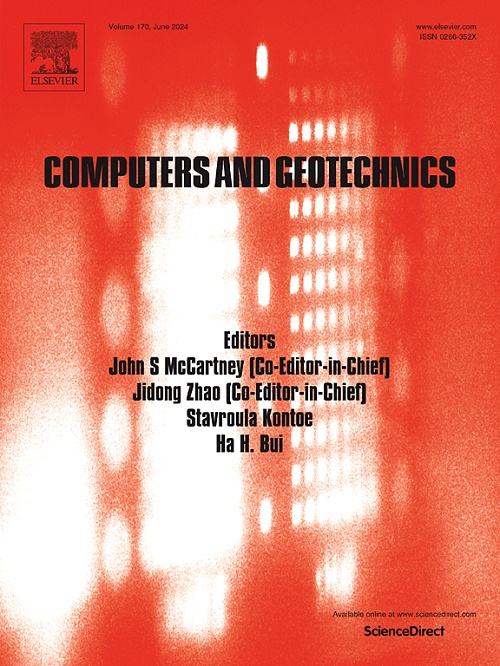Damage evolution and toughening mechanism of shield tunnel segments strengthened by epoxy-bonded thin plates considering interface effects
IF 5.3
1区 工程技术
Q1 COMPUTER SCIENCE, INTERDISCIPLINARY APPLICATIONS
引用次数: 0
Abstract
Bonding steel plates is widely used for repairing damaged segment linings in the operation and maintenance of subway tunnels. The effectiveness of this method primarily relies on the bonding performance at the interface between the strengthening plate and the segment linings. A refined numerical model incorporating interface effects was developed in this study. To accurately simulate the adhesive interface, the cohesive zone model (CZM) was introduced, and a mixed-mode cohesive law was employed to characterize the interface stress in three directions. Full-scale experiments validated the proposed model. Then, the deformation response and toughening mechanism of steel plate-strengthened segment linings were analyzed. The failure evolution and debonding mechanism of the adhesive interface were examined. Finally, a series of simulation experiments were conducted to evaluate the effect of steel plate thickness and strengthening timing on structural toughness. The results indicate that bonding steel plates to the lining ring partially restores structural toughness. Interfacial debonding failure initiates at the 8° and 352° joints, propagates to the 73° and 287° joints, and ultimately manifests at the interface ends. Significant stress concentration is observed at the interface near the joints, which is the primary cause of interface debonding failure.
考虑界面效应的环氧胶合薄板盾构管片损伤演化及增韧机理
在地铁隧道的运营和维护中,粘结钢板被广泛用于修复损坏的管片衬砌。该方法的有效性主要取决于强化板与管片衬砌界面处的粘结性能。本文建立了一个考虑界面效应的精细数值模型。为了准确地模拟粘接界面,引入了粘接区模型(CZM),并采用混合模式黏接规律对三个方向的界面应力进行了表征。全尺寸实验验证了所提出的模型。分析了钢板加固管片衬砌的变形响应和增韧机理。研究了粘接界面的破坏演化和脱粘机理。最后,通过一系列的模拟实验来评估钢板厚度和强化时间对结构韧性的影响。结果表明,钢板与衬环结合可部分恢复结构韧性。界面脱粘破坏从8°和352°节理开始,扩展到73°和287°节理,最终在界面端表现出来。靠近节理的界面处存在明显的应力集中,这是导致界面脱粘破坏的主要原因。
本文章由计算机程序翻译,如有差异,请以英文原文为准。
求助全文
约1分钟内获得全文
求助全文
来源期刊

Computers and Geotechnics
地学-地球科学综合
CiteScore
9.10
自引率
15.10%
发文量
438
审稿时长
45 days
期刊介绍:
The use of computers is firmly established in geotechnical engineering and continues to grow rapidly in both engineering practice and academe. The development of advanced numerical techniques and constitutive modeling, in conjunction with rapid developments in computer hardware, enables problems to be tackled that were unthinkable even a few years ago. Computers and Geotechnics provides an up-to-date reference for engineers and researchers engaged in computer aided analysis and research in geotechnical engineering. The journal is intended for an expeditious dissemination of advanced computer applications across a broad range of geotechnical topics. Contributions on advances in numerical algorithms, computer implementation of new constitutive models and probabilistic methods are especially encouraged.
 求助内容:
求助内容: 应助结果提醒方式:
应助结果提醒方式:


